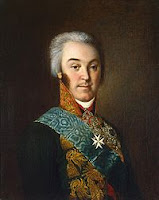 |
| Trayvon Martin |
The black male became "suspicious" on August 21, 1831 when Nat Turner set out with a group of conspirators to free the slaves of Virginia. He didn't make it too far. Turner's bloody rampage began with the slaying of the family that owned and named him and then moved on to other plantations until close to sixty white people had been clubbed, knifed or axed to death. The band of revolutionaries were soon dispersed by the state milita. When Turner was finally captured, he was tried and sentenced to death. He was then hanged, beheaded, flayed and quartered. Some of his skin was later used to make a souvenir change purse that would end up in the pocket of a white man.
New laws soon followed, further limiting the nearly non-existent civil rights of blacks through out the South. Black worship services were ban unless a white minister was present. Teams of slave hunters were commissioned to insure the return of local run aways. During the same period, over a third of the three million slaves in what would become the Confederacy were sold and transported from the tobacco farms of the "upper" South to the cotton plantations of the Mississippi basin. A general polarization of the feelings regarding slavery was developing throughout the United States. The Nat Turner revolt functioned as its spring board. Court rulings and social stigma soon limited the public discussion of emancipation in Southern communities while abolitionists became the target of violent, vigilante justice. In the North, by the time Abraham Lincoln was sworn in as President, over one million Yankees had joined the ranks of The Wide Awakes, a non-violent, highly organized movement to end human bondage.
After the Turner uprising of 1831, all blacks in the South became suspicious. Fear began fueling a new and enhanced form of racism that continues today in the United States. Just as Nat Turner emerged from the shadow of moral and legal injustice imposed by the "peculiar institution" of slavery, so have the terrorist attacks of September 11, 2001 come to symbolize an uprising against the white Judeo-Christian ruling class of the world. The World Trade Towers symbolized the western ideology of economic domination through monopolization of global resources, manufacturing and distribution. The Towers, in a sense, were the very manifestation of capitalistic oppression of the majority by the privileged few.
Polarization is occurring again. The Occupy Wall Street movement and its the demonization of the financially dominant 1% is pitting citizen against citizen and world community members against one another. It harkens to the times pre-dating the blood letting of the American Civil War. Fear and anger drive the political policies of our country. Our prisions are over flowing, our public education system demoralized and our military continually deployed.
If we are to avoid cultural and environmental disaster, we must face our demons together. The suspicious must lower their masks and step into the light. The fearful must meet face to face with them and acknowledge their own racism and xenophobia. Most of all, we must come to terms with the gluttony that demands endless consumption of resources at the expense of global health and individual equality. Technology must be tempered with love; a love for the planet, a love of nature, of species, of race and most importantly, of self. Self is where it all begins. We must all pull back our hoodies, reach out our hands and begin building the kind of human family and community we are capable of becoming.




